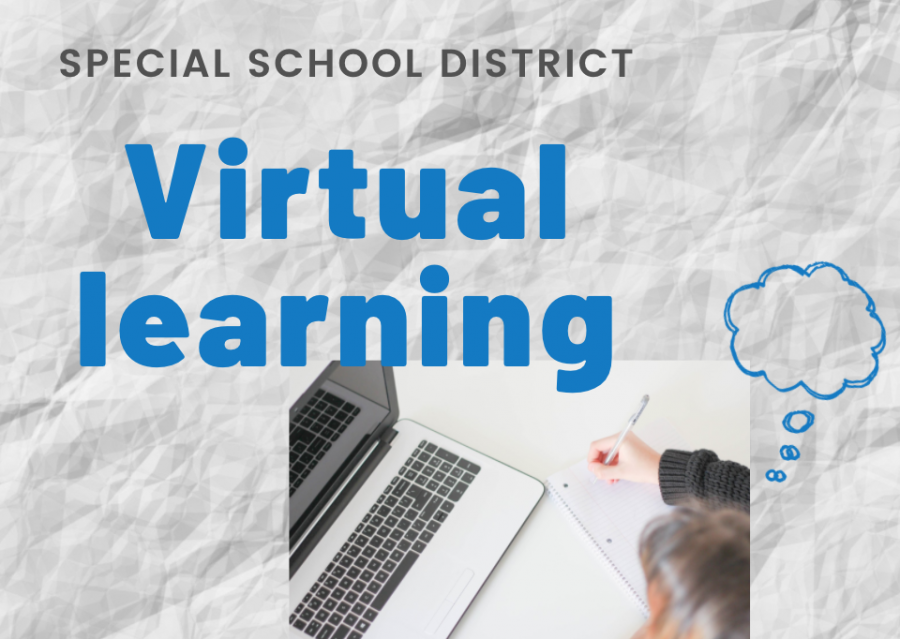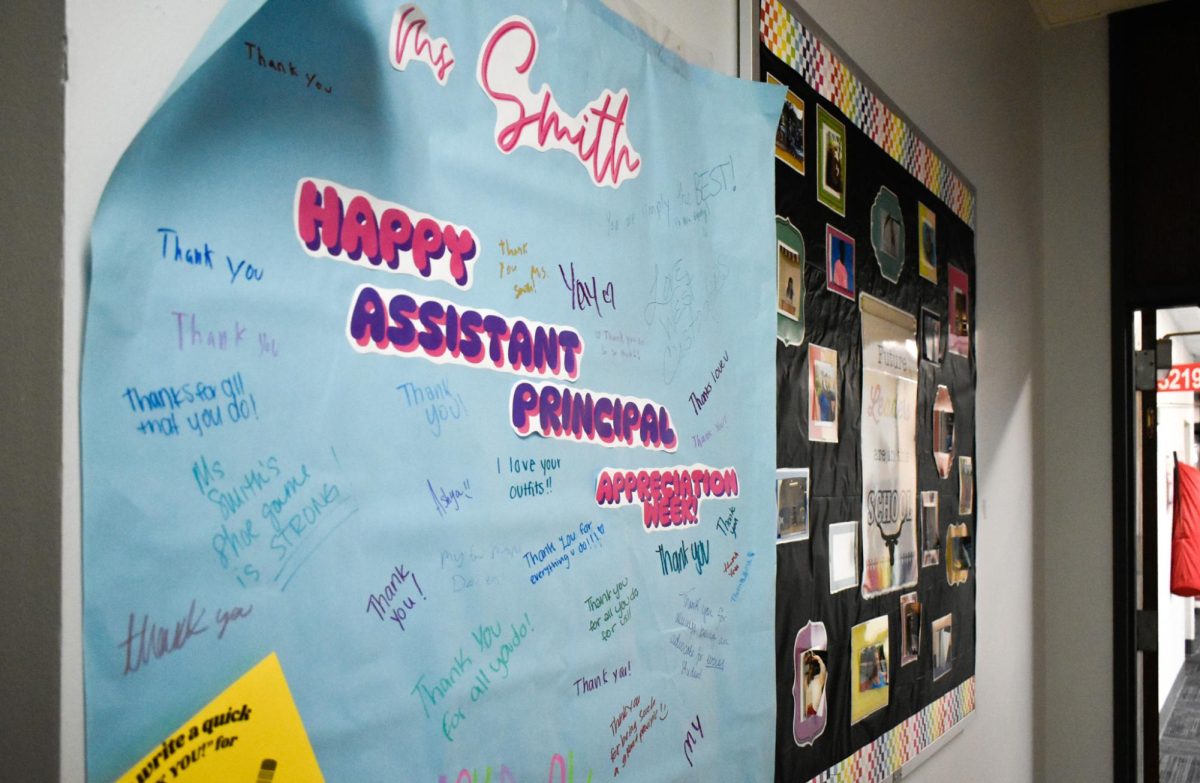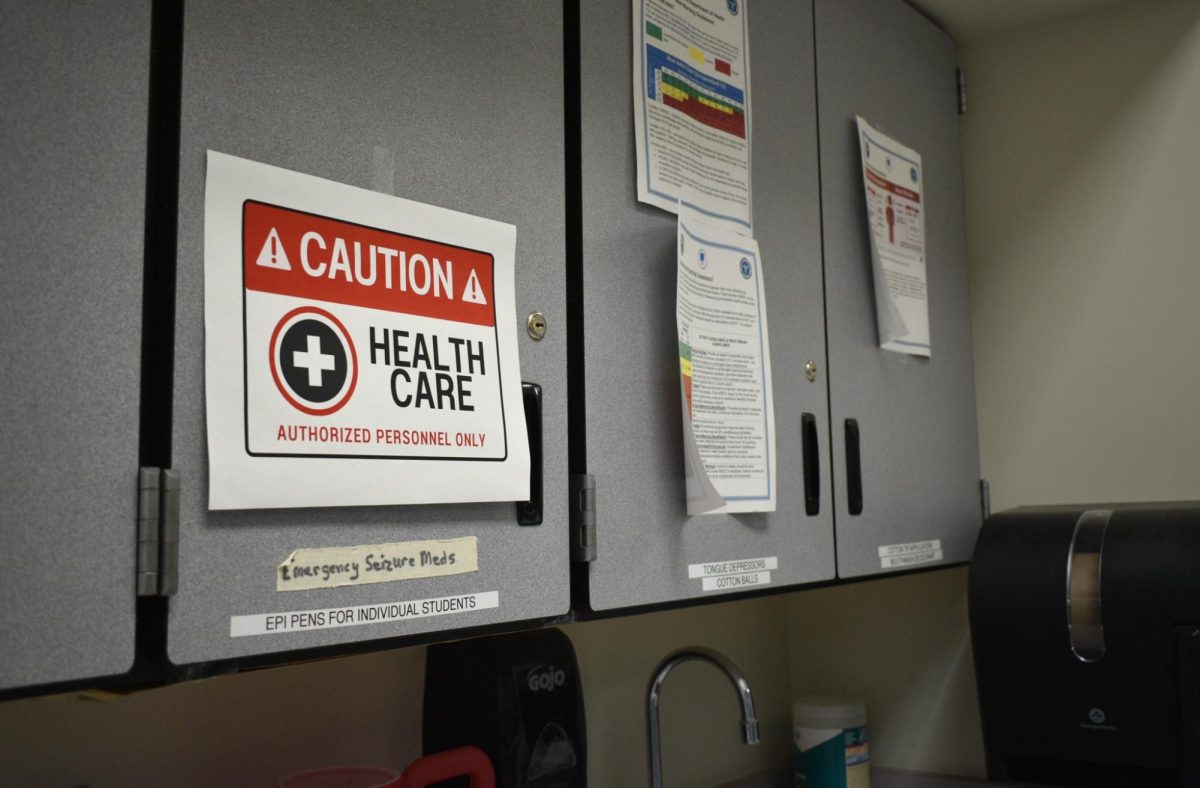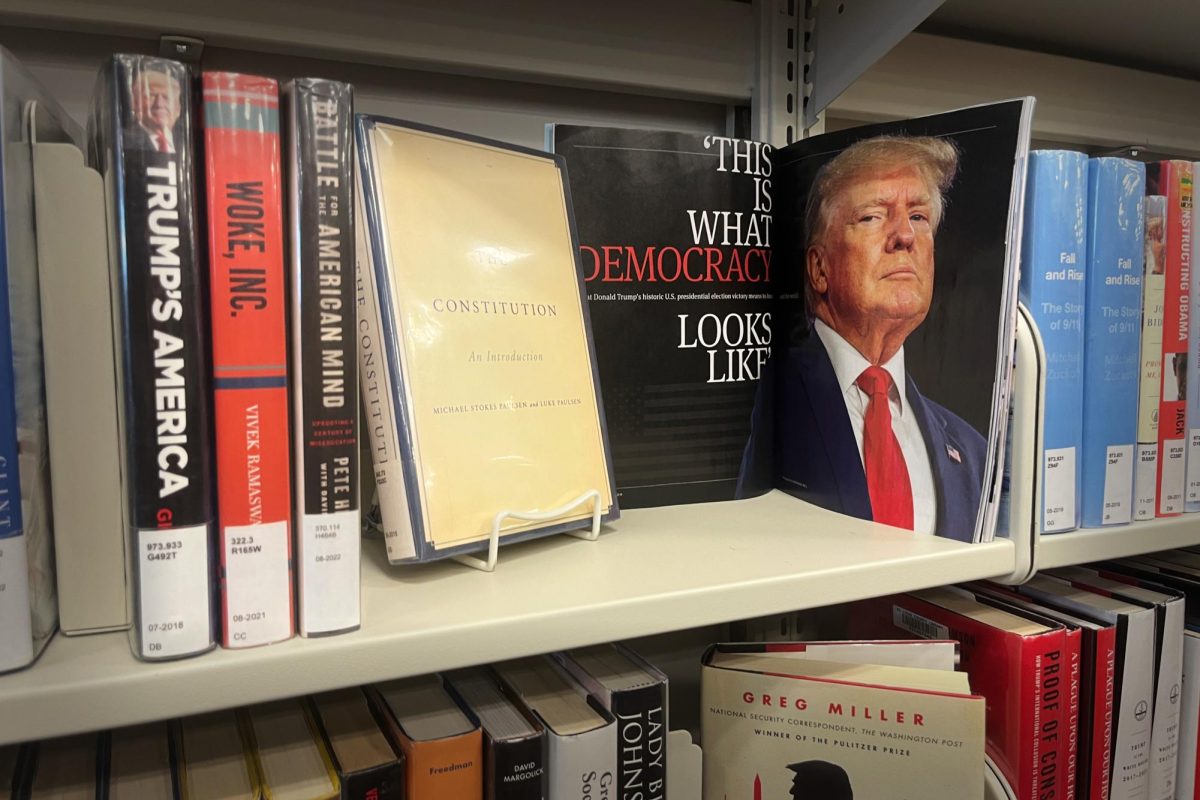Since March, many of us have grown used to the Zoom-meeting, online school, new-normal atmosphere. However, these adaptations have been simpler for some more than others, and several hurdles have been overlooked. Members of the Special School District (SSD) community have been working to voice their concerns.
These hurdles include the transition to online learning for students in the SSD. Much like Parkway, and any district, every student is unique and has their own experience. However, there have been common shortcomings for students with special needs.
“I think COVID-19 has revealed how much our students benefit from in-person instruction. These students have been identified as needing things presented differently, needing someone to check on them frequently or needing a little extra explaining, but they also don’t want other kids to know that they need help,” special education and ASC teacher Lauren Perez said. “This is a very delicate balance in the virtual setting. You want to make sure kids have what they need but you also want them to feel comfortable and not like you are drawing attention to their differences. This is not ideal for anyone.”
Due to an increase of COVID-19 cases in our community, distance learning is currently the safest option for everyone. However, parents and teachers in SSD have been working to improve the virtual learning experience.
SSD Parent Amber Barenbruegge decided to take her first-grader, Max, out of school and homeschool him, because virtual learning was difficult for him in the spring. In home school, he is now receiving his special education services through the Special Non-Public Access Program (SNAP). Her preschooler, Henry, is still attending virtual school.
“There are multiple levels of leadership on both the partner school and SSD side, and we had to continuously go up both chains until we reached Dr. Marty and Dr. Keenan. It was an incredible amount of work and required continuous follow up. We would often get told by SSD that Parkway was in charge of making a decision and then would get told by Parkway that SSD is in charge of making a decision,” Barenbruegge said.
Voicing her requests to the districts over a two-month period, Barenbruegge and other parents have sent close to 100 emails, made phone calls and put in dozens of hours of work regarding special education, such as access to Individualized Education Program (IEP) services online, during COVID-19 closures. They also took guidance from the Missouri Department of Secondary Elementary Education and the Office of Civil Rights.
“Some kids just thrive from forming relationships and making connections with teachers. This is much more difficult virtually,” Perez said. “The hands-on element is not there, which truly enriches many kids’ learning. I can show videos or do demos for the kids, but it’s just not the same as them experiencing the learning for themselves.”
Nearly 150 educators protested the budget for SSD at a school board meeting June 23. Some requests included money being spent on further pay increases, hiring more teachers to address overcrowded classrooms and buying technology and resources to address disparities.
“Some students don’t live in an environment conducive to learning,” Perez said. “Some people have little siblings or nieces and nephews at home, some people have many people in and out for various reasons, some people have multiple people working or going to school from home and it is distracting. There are a host of reasons that some students are not thriving at home.”
Yet, several issues occurring in the SSD that are not related to virtual learning, such as allocation of funds and lack of resources, were not caused by the pandemic. Virtual learning has brought inequities to light, but these problems existed prior due to a larger societal neglect for students with special learning needs. We have made significant strides over the past 50 years for disability justice in education, but remain far from perfect.
The number of students with disabilities served under the Individuals with Disabilities Education Act has increased by a quarter over the past two decades. Yet, federal funding remains low. In 2017, the federal government only covered 14.6% of the additional cost for districts, when it promised it would cover 40%. Additionally, in March, the Federal Department of Education urged schools to offer online learning for students with disabilities, but since then, it has not provided schools any guidance on how to do so.
“Our big concern is making sure that Parkway preschool special education students are able to continue to access their IEP services virtually if school returns in-person. This wasn’t offered under the original plan, and we’ve advocated hard for it to happen,” Barenbrugge said. “We have a high-risk child at home, and we know we’re not the only parents who have similar concerns. Both Parkway and SSD have told us they’re working to make this happen.”
While striving for continued individualized virtual education and accessibility to learning resources, Barenbrugge also mentions positives from this experience.
“Virtually, I also feel that there is a much better understanding and dialogue that can happen between the parents and teachers. Being able to observe speech and language therapy is a huge bonus too. For Henry, I can see the techniques they’re using to get him to use more words and answer questions and describe objects. For Max, I can see how they’re asking him to make the sounds and how they’re modeling it for him,” Barenbrugge said. “Their special education teachers only have them for a small number of hours a week. By working on these skills in between sessions, we’re increasing the chance that they meet and even surpass their goals.”
Parents and teachers have been working very hard to create a positive, comfortable learning environment virtually. However, this pandemic has significantly highlighted inequities in the district which predated COVID-19. With increased attention to the needs of all students in our community, we hope that this pandemic can serve as a learning experience for setting a better model of education for future students.



![Leaning on the podium, superintendent Melissa Schneider speaks to Parkway journalism students during a press conference. Schneider joined Parkway in July after working in the Thompson School District in Colorado. “My plan [to bond with students] is to get things on my calendar as much as possible. For example, being in [classes] is very special to me. I am trying to be opportunistic [meeting] kids [and] being in [the school] buildings. I have all the sports schedules and the fine arts schedules on my calendar, so that when I'm available, I can get to them,” Schneider said.](https://pwestpathfinder.com/wp-content/uploads/2025/09/IMG_5425-1200x943.jpeg)


![Red, white and blue, the American flag holds the values of our democracy. The fight that we once endured has returned, as student journalists and senior correspondents across the country are losing their voices due to government control. “[Are] the White House and [the] government limiting free speech [and] freedom of the press? Yes [they are],” chief communications officer of the Parkway School District and former journalist Elisa Tomich said.](https://pwestpathfinder.com/wp-content/uploads/2025/03/Untitled-design-14.jpg)
![A board in the Parkway West counseling department displays pennants of selective universities. With a wide range of students interested in attending, it’s important that these schools have clear priorities when deciding who to admit. “[Washington University] had the major that I wanted, psychology, philosophy, neuroscience. That's a holistic study of the brain, and [WashU is] the only college in the world that offers that. That's the main reason I wanted to go; I got into that program,” senior Dima Layth said.](https://pwestpathfinder.com/wp-content/uploads/2025/02/Flag-1.png)

![Within the U.S., the busiest shopping period of the year is Cyber Week, the time from Thanksgiving through Black Friday and Cyber Monday. This year, shoppers spent $13.3 billion on Cyber Monday, which is a 7.3% year-over-year increase from 2023. “When I was younger, I would always be out with my mom getting Christmas gifts or just shopping in general. Now, as she has gotten older, I've noticed [that almost] every day, I'll open the front door and there's three packages that my mom has ordered. Part of that is she just doesn't always have the time to go to a store for 30 minutes to an hour, but the other part is when she gets bored, she has easy access to [shopping],” junior Grace Garetson said.](https://pwestpathfinder.com/wp-content/uploads/2024/12/DSC_0249.JPG-1200x801.jpg)

![Senior Sally Peters stands in the history hallway, contemplating her choices in the 2024 United States and Missouri elections on Nov. 5. As a member of Diplomacy Club, Peters has discussed key candidates and issues in contemporary American politics. “[As students], we're starting to become adults. We're realizing how much the policies that are enforced and the laws that make it through the House and Senate are starting to affect us. [Opportunities such as] AP [U.S.Government] and Diplomacy Club [make elections feel] a lot more real,” Diplomacy Club vice president and senior Nidhisha Pejathaya said.](https://pwestpathfinder.com/wp-content/uploads/2024/10/Flag-1-1.png)
![Mounting school pressure can leave many students overworked and overstressed. Schools must give students the necessary resources to help assuage student mental health issues and prevent the development of serious crises. “The biggest thing [schools] can do [to protect student mental health] is offer more time [to do work], like a study hall, or offer more support from teachers so that students don't feel stressed out and can get help in areas that they need,” senior Bhavya Gupta said.](https://pwestpathfinder.com/wp-content/uploads/2024/09/unnamed-4.jpg)
![After a thrilling point, senior Katie Byergo and junior Elle Lanferseick high-five each other on Oct. 8. With teamwork and camaraderie, Byergo worked together in the game against Lafayette High School. “[Byergo’s] is really positive with a good spirit,” Lanferseick said. “I set her [the ball] and she hits it [or] gets the kill.”](https://pwestpathfinder.com/wp-content/uploads/2025/10/DSC_9349-1-e1761159125735-1200x791.jpg)
![Focused on providing exceptional service, sophomore Darsh Mahapatra carefully cleans the door of a customer’s car. Mahapatra has always believed his customers deserve nothing less than the best. “[If] they’re trusting us with their car and our service, then I am convinced that they deserve our 100 percent effort and beyond,” Mahapatra said.](https://pwestpathfinder.com/wp-content/uploads/2025/10/DSC_0018-1200x800.jpg)
![Sophomore Aleix Pi de Cabanyes Navarro (left) finishes up a soccer game while junior Ava Muench (right) warms up for cross country practice. The two came to Parkway West High School as exchange students for the 2025-2026 school year. “The goal for the [exchange] program is to provide opportunities for both Parkway students and our international exchange students to learn about other cultures, build connections and become confident, capable, curious and caring — Parkway’s Four C’s — in the process,” Exchange Program Lead Lauren Farrelly said.](https://pwestpathfinder.com/wp-content/uploads/2025/10/Feature-Photo-1200x800.png)
![Gazing across the stage, sophomore Alexis Monteleone performs in the school theater. The Monteleone family’s band “Monte and the Machine” has been releasing music since 2012, but Alexis started her own solo career in 2024 with the release of her first single, Crying Skies. “My whole family is very musical, [and I especially] love writing [songs with them],” Monteleone said.](https://pwestpathfinder.com/wp-content/uploads/2025/09/DSC7463-1200x798.jpg)

![Leaping through the air, senior Tyler Watts celebrates his first goal of the season, which put the Longhorns up 1-0 against the Lafayette Lancers. Watts decided to play soccer for West for his last year of high school and secured a spot on the varsity roster. “[Playing soccer for West] is something I had always dreamed of, but hadn’t really had a good opportunity to do until now. It’s [really] fun being out [on the field], and I’m glad I decided to join the team. It’s just all about having fun with the boys and enjoying what time we have left together,” Watts said.](https://pwestpathfinder.com/wp-content/uploads/2025/09/DSC_1951-1200x855.jpg)
![Shifting global trade, President Donald Trump’s tariffs are raising concerns about economic stability for the U.S. and other countries alike. “[The tariffs are] going to pose a distinct challenge to the U.S. economy and a challenge to the global economy on the whole because it's going to greatly upset who trades with who and where resources and products are going to come from,” social studies teacher Melvin Trotier said.](https://pwestpathfinder.com/wp-content/uploads/2025/05/MDB_3456-1200x800.jpg)

![Pitching the ball on Apr. 14, senior Henry Wild and his team play against Belleville East. Wild was named scholar athlete of the year by St. Louis Post-Dispatch after maintaining a high cumulative GPA and staying involved with athletics for all of high school. “It’s an amazing honor. I feel very blessed to have the opportunity to represent my school [and] what [it] stands for,” Wild said.](https://pwestpathfinder.com/wp-content/uploads/2025/05/unnamed-6-1200x714.jpg)
![Freezing in their position, the Addams Family cast hits the “rigor mortis” pose after cast member and senior Jack Mullen, in character as Gomez Addams, calls out the stiff death move. For the past four months, the combined company of cast members, orchestra pit, crew and directors all worked to create the familial chemistry of the show. “I’m excited for [the audience] to see the numbers, the music, the scenes, but I also just love all the technical aspects of it. The whole spectacle, the costumes, makeup and the people that put in the work backstage in order to make the show successful on stage. I’m excited for people to see and appreciate that,” Mullen said.](https://pwestpathfinder.com/wp-content/uploads/2025/03/DSC0116-1200x800.jpg)